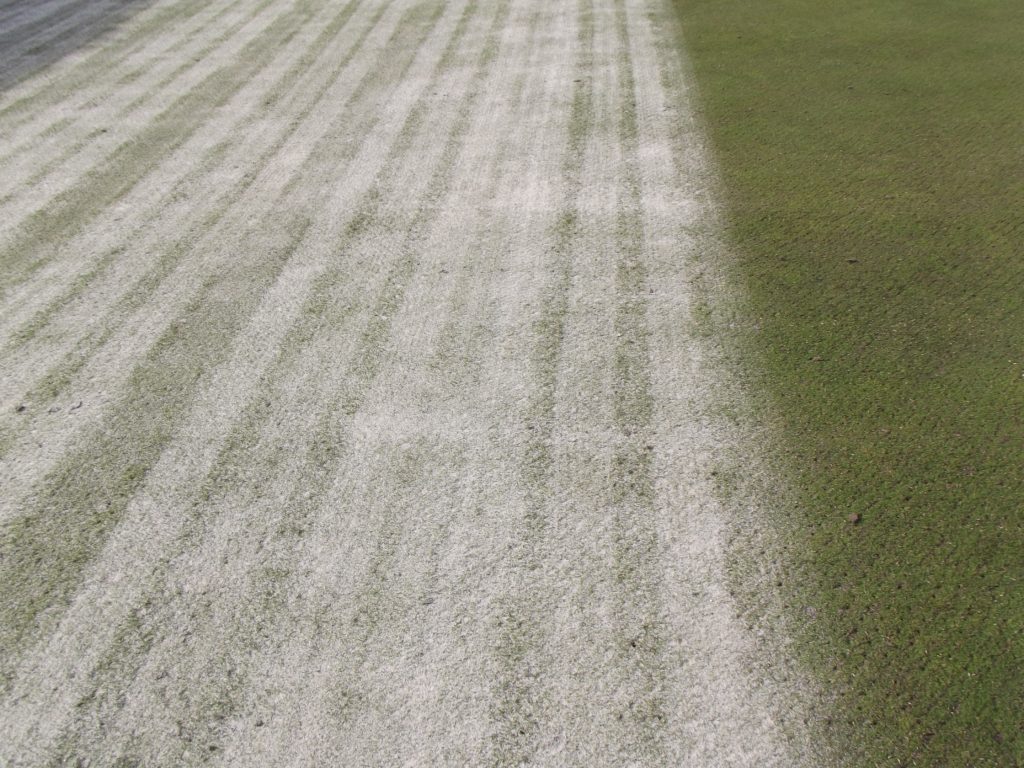As the summer seems to be passing more quickly than ever, many clubs will already be pencilling in the usual list of autumn renovation tasks: fungicide applications, a few tonnes of sand topdressing, a dash of insecticide for good measure, and the annual hit of high-salt fertiliser. It’s tradition. But it’s also increasingly becoming a costly mistake, both financially and ecologically.
A £2,000 Mistake?
For an average bowling club, this seasonal “renovation pack” can easily run to £2,000 or more. Fungicides, insecticides, sand, fertiliser, labour, equipment hire, it all adds up. Yet few stop to ask: Is this spend necessary, or is it just habitual?
If you’re applying chemicals and sand without understanding your soil’s actual needs, you’re not maintaining your green, you’re firefighting symptoms. And worse, you may be doing long-term harm to the very system you’re trying to improve.
Sand: From Friend to Foe?
The decades old obsession with sand topdressing is perhaps the most telling example. It’s a practice rooted in golf greenkeeping, a model that’s long been misapplied to bowls. In “50 Years of Sand”, I explained how many greens have reached a point of critical imbalance. They’re already too sandy. Every additional tonne pushes them further away from healthy, functioning soil.
Once a soil becomes excessively sandy, its ability to retain nutrients, moisture, and beneficial microbial life is severely compromised. The result? Localised Dry Patch, chronic thatch build-up, compaction problems, and a growing reliance on synthetic inputs to prop the system up, inputs that only accelerate the cycle.
More on this can be found in the “Great Topdressing Debate” and “Sand: Friend or Foe?”. The evidence is clear: for many clubs, adding more sand is like pouring fuel on a fire.
Fungicides and Insecticides: Hidden Human and Environmental Costs
Routine applications of fungicides and insecticides may offer short term relief from visible problems, but at a price. These are among the most biologically active and potentially harmful substances used in turf management.
They don’t just suppress disease or insects, they also compromise soil microbial diversity, disrupt natural disease resistance mechanisms, and pose real risks to applicators, club members, and local wildlife. And with legislation tightening and product availability shrinking, this approach is quickly becoming unsustainable.
High-Salt Fertilisers: Feeding the Problem
Then there’s the common use of high salt fertilisers in autumn, at the very moment when soils should be recovering and consolidating microbial gains before winter.
As discussed in “Soil Texture and the Triangle”, sandy soils already struggle to retain nutrients. Hitting them with more synthetic fertilisers exacerbates the problem. Salts build up, microbial life retreats, and the thatch continues to accumulate, leading to even more aggressive renovations the following year. And so the cycle continues.
The Real Alternative: Health Focused, Incremental Improvement
By dropping the automatic autumn “treatment plan” and replacing it with a considered, natural, and soil health first strategy, clubs can save money and start a journey toward a better-performing green.
A health-first renovation plan focuses on:
- Diagnosing soil and organic matter conditions before acting
- Reducing reliance on inputs by supporting natural biology (fungi, bacteria, soil fauna)
- Using inoculants and bio-stimulants instead of harsh chemicals
- Tailoring nutrition to actual plant and soil needs, not guesswork
- Rebuilding humus and natural disease resistance over time
With expert guidance, amateur and/or volunteer greenkeepers can make meaningful progress using this approach, often seeing improvements within one season, and achieving dramatically better performance within two to three years.
A Chance to Break Free
The habitual autumn renovation cycle is expensive, destructive, and ultimately futile. Every year it promises renewal, but often delivers only a deeper dependence on external inputs and dwindling returns.
By stepping back this year, by choosing to observe, understand, and respond rather than blindly repeat, we can start building greens that are more natural, more economical, and more enjoyable to maintain.
You could save £2,000 this year by simply not doing the wrong things. And you might just open the door to a far more rewarding way of working with your green.
Ready to Take a Different Path?
Explore more in these related articles:
- 50 Years of Sand
- The Great Top Dressing Debate
- Mair Sand?
- Sand Top Dressing: Friend or Foe?
- Soil Texture Triangle
Or better still—get in touch and let’s start planning a smarter, simpler autumn for your green.

